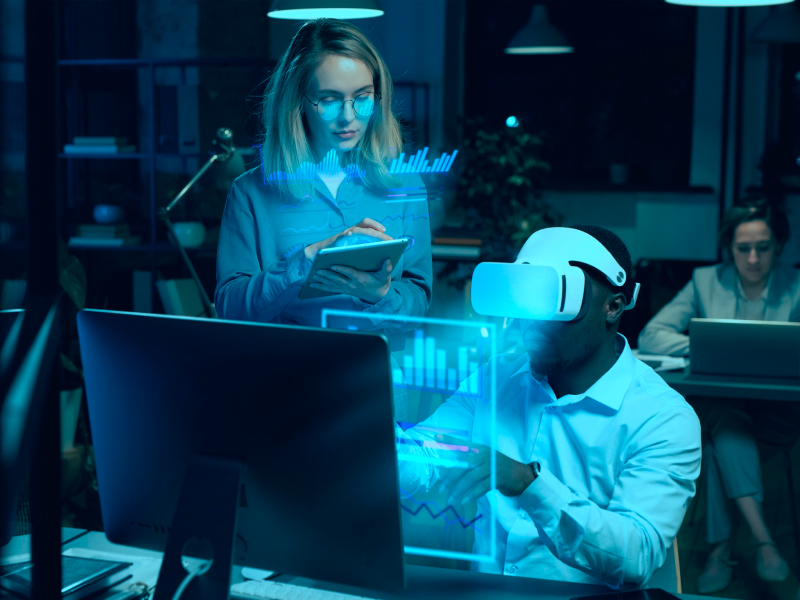Employees are turning to artificial intelligence for a range of tasks that once required human interaction. Crafting emails, generating meeting notes, and even answering routine queries now often involve AI tools. While these technologies enhance efficiency, they also diminish the need for personal interactions that are essential for building strong workplace relationships.
Reduced casual interactions
In many workplaces, the water cooler moments where employees could share ideas or simply catch up are becoming rare. AI’s ability to provide quick answers and solutions means that employees have fewer reasons to seek out their colleagues for input or advice. These changes are subtle yet profound, affecting the fabric of workplace camaraderie and connectivity.
Impact on relationship building
Relationships at work form the backbone of a vibrant office culture. They foster trust, collaboration, and a sense of belonging. When AI steps in to handle interactions, the opportunities for creating these bonds diminish. Employees miss out on the chance encounters that lead to deeper discussions, shared experiences, and mutual understanding.
The diminishing human element
As AI becomes more integrated into daily tasks, the human element of the workplace experiences a shift.
The spontaneous, creative brainstorming sessions that once led to groundbreaking ideas are less frequent.
Employees, especially those new to the workforce, find fewer opportunities to engage in the kind of rich, nuanced conversations that spur innovation and personal growth.
Effects on professional development
Young professionals stand to lose the most in this new AI-driven environment. The mentorship and learning that occur through direct interaction are invaluable for career growth. When AI replaces these interactions, it limits the exposure of these employees to the diverse perspectives and experiences of their colleagues, which are crucial for developing a well-rounded skill set.
Creativity and innovation at risk
Creativity and innovation thrive in environments where people feel free to share ideas and take risks. The presence of AI, while beneficial in many ways, can create a more transactional and less emotionally engaging workplace. Without the need to ask questions or seek feedback, employees may find themselves working in silos, deprived of the collaborative spark that ignites innovation.
Loneliness and social connectivity
While AI enhances efficiency, streamlining tasks like scheduling and data analysis, it also reduces the need for human interaction. Workers increasingly rely on digital communication, leading to fewer opportunities for spontaneous, face-to-face conversations that foster strong interpersonal relationships.
The link between AI and isolation
According to research conducted by the American Psychological Association, experts express concern that the integration of AI in workplaces may exacerbate feelings of isolation among employees.
Surveys indicate that a significant number of adults feel lonely, a situation worsened by the pandemic and the shift towards remote work.
With AI taking over routine interactions, there’s a risk that employees might experience even less human contact, potentially intensifying feelings of loneliness.
Balancing AI and human interaction
Organizations are exploring ways to integrate AI without compromising human interaction. Encouraging a culture where employees use AI for repetitive tasks but engage in direct communication for brainstorming and problem-solving is one approach.
Companies are also creating spaces and events that encourage personal interactions, helping to maintain a sense of community and connection among staff.
A balanced approach to AI and human interaction in the workplace supports productivity and employee well-being. When workers engage in meaningful collaborations, they report higher job satisfaction and a stronger sense of belonging. These environments are natural breeding grounds for creativity and innovation, as diverse perspectives come together, and team members feel valued and understood.
Potential positive outcomes of AI in workplace conversations
One of the optimistic views is that AI can improve the quality of workplace conversations. When AI takes over routine and repetitive tasks, employees have more time to engage in discussions that require critical thinking, creativity, and strategic planning.
More focused and productive interactions
Employees can concentrate on more complex and meaningful work when AI handles mundane tasks. For instance, if AI tools manage data entry or schedule meetings, workers can dedicate more time to brainstorming sessions, problem-solving, and creative thinking. Such a shift leads to more focused and productive interactions among team members, fostering a collaborative environment where ideas flourish.
Data-driven decision making
AI’s ability to analyze vast amounts of data quickly and accurately supports employees in making informed decisions. Access to real-time data and analytics helps teams evaluate their strategies and outcomes, leading to more objective and data-driven discussions. When team members base their conversations on solid data, the quality of dialogue and decision-making improves.
Continuous learning and improvement
AI systems often come with learning algorithms that adapt and improve over time, reflecting on the continuous learning culture within the workplace. Employees interacting with these systems can gain insights into their work patterns, identify areas for improvement, and develop new skills. Such an environment encourages a culture of continuous learning and improvement, where employees feel motivated to grow professionally.
Creativity and innovation aren’t always at risk
With AI handling routine inquiries and tasks, employees have more mental space to think creatively and innovate. Teams can focus on brainstorming and developing new ideas rather than getting bogged down with administrative tasks. This shift can lead to the development of innovative products, services, and solutions, ultimately driving the company’s growth and success.





